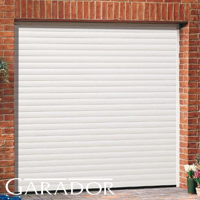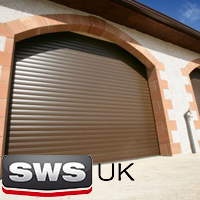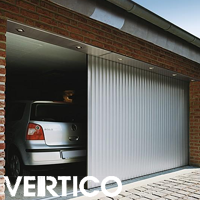Home » Materials, Features & Styles » Materials
Materials
 Each door we supply are created from a variety of different materials depending on what finish you like as well as the overall look you are trying to create for your home. Here at the garage door centre, we can provide you with doors in:
Each door we supply are created from a variety of different materials depending on what finish you like as well as the overall look you are trying to create for your home. Here at the garage door centre, we can provide you with doors in:
Click on the images below to find out more.
The heavier it is – the harder it can be to operate manually and electrically as it will require more force and power to operate the garage door. However there are ways of allowing the door of choice to work efficiently without heavy operation.
Talk to one of our experienced sales team to find out more. Each material used has a different set of properties from each other. With this in mind it is important you consider carefully not only the look and finish you want but to also keep in mind that timber will require a lot more maintaining to keep it in good condition for many years to come. This is due to treating the wood every 6 months on top of maintenance to any tracking you might require.
If you do not want this then there are a variety of different materials to pick from. All of the materials will come finished in the colour, or woodgrain, of your choice.
Aluminium
Aluminium is a chemical element in the boron group with symbol Al and atomic number 13. It is a silvery-white, soft, nonmagnetic, ductile metal. By mass, aluminium makes up about 8% of the Earth's crust; it is the third most abundant element after oxygen and silicon and the most abundant metal in the crust, though it is less common in the mantle below.
Aluminium is remarkable for the metal's low density and its ability to resist corrosion through the phenomenon of passivation and its alloys are vital to the aerospace industry and important in transportation and structures, such as building facades and window frames. The oxides and sulfates are the most useful compounds of aluminium.
|
The Garador GaraRoll Aluminium Roller Garage Door
|
SWS SeceuroGlide Excel Aluminium Roller Door
|
Vertico Round the Corner Aluminium Door
|
Manufactures of Aluminium Doors:
Hormann | Garador | Vertico | SWS
Steel
Steel is an alloy of iron and other elements, primarily carbon, that is widely used in construction and other applications because of its high tensile strength and low cost. Steel's base metal is iron, which is able to take on two crystalline form, body centered cubic and face centered cubic, depending on its temperature.
It is the interaction of those allotropes with the alloying elements, primarily carbon, that gives steel and cast iron their range of unique properties. In the body-centred cubic arrangement, there is an iron atom in the centre of each cube, and in the face-centred cubic, there is one at the center of each of the six faces of the cube. Carbon, other elements, and inclusions within iron act as hardening agents that prevent the movement of dislocations that otherwise occur in the crystal lattices of iron atoms.
The carbon in typical steel alloys may contribute up to 2.1% of its weight. Varying the amount of alloying elements, their presence in the steel either as solute elements, or as precipitated phases, retards the movement of those dislocations that make iron comparatively ductile and weak, and thus controls its qualities such as the hardness, ductility, and tensile strength of the resulting steel. Steel's strength compared to pure iron is only possible at the expense of iron's ductility, of which iron has an excess.
Steel was produced in bloomery furnaces for thousands of years, but its extensive use began after more efficient production methods were devised in the 17th century, with the production of blister steel and then crucible steel. With the invention of the Bessemer process in the mid-19th century, a new era of mass-produced steel began. This was followed by Siemens-Martin process and then Gilchrist-Thomas process that refined the quality of steel. With their introductions, mild steel replaced wrought iron.
Manufactures of Steel Doors:
CarTeck | Garador | Gliderol | Hormann | NovoFerm | Ryterna | SWS
Timber
Nordic Pine
Color/Appearance: Heartwood is a light brown, sometimes with a slightly reddish hue, sapwood is a pale yellow to nearly white. Color tends to darken with age.
Grain/Texture: Grain is straight with an even, medium texture.
Endgrain: Large resin canals, numerous and evenly distributed, mostly solitary; earlywood to latewood transition gradual, color contrast fairly low; tracheid diameter medium to large.
Rot Resistance: The heartwood is rated as moderate to low in decay resistance.
Workability: Eastern White Pine is easy to work with both hand and machine tools. Glues and finishes well.
European Oak
Color/Appearance: Heartwood is a light to medium brown, commonly with an olive cast, though there can be a fair amount of variation in color. Nearly white to light brown sapwood is not always sharply demarcated from the heartwood. Quartersawn sections display prominent ray fleck patterns.
Grain/Texture: Grain is straight, with a coarse, uneven texture. May have irregular or interlocked grain depending on growing conditions of the tree.
Endgrain: Ring-porous; 2-4 rows of large, exclusively solitary earlywood pores, numerous small to very small latewood pores in radial arrangement; tyloses abundant; growth rings distinct; rays large and visible without lens; apotracheal parenchyma diffuse-in-aggregates (short lines between rays).
Rot Resistance: English Oak has been rated as having very good resistance to decay, and is commonly used in boatbuilding applications.
Workability: Produces good results with hand and machine tools. Can react with iron (particularly when wet) and cause staining and discoloration. Responds well to steam-bending. Glues, stains, and finishes well.
Iroko
Color/Appearance: Heartwood is usually a yellow to golden or medium brown, with color tending to darken over time. Pale yellow sapwood is clearly demarcated from the heartwood.
Grain/Texture: Iroko has a medium to coarse texture, with open pores and an interlocked grain.
Endgrain: Diffuse-porous; large pores in no specific arrangement; solitary and radial multiples of 2-3; tyloses common; growth rings indistinct; rays visible without lens; parenchyma banded, paratracheal parenchyma vasicentric, aliform (winged and lozenge), and confluent.
Rot Resistance: Iroko is very durable, and is resistant to both rot and insect attack; it’s sometimes used as a substitute for Teak.
Workability: Generally easy to work, with the exception of its interlocked grain, which may cause some tearout during surfacing operations. Also, deposits of calcium carbonate are sometimes present, which can have a significant dulling effect on cutters. Iroko glues and finishes well.
Cedar
Color/Appearance: Heartwood is a light reddish brown. Narrow sapwood is pale yellow-brown to almost white and is clearly demarcated from the heartwood.
Grain/Texture: Grain is straight, with a fine uniform texture.
Endgrain: Resin canals absent; earlywood to latewood transition gradual, color contrast medium; tracheid diameter small-medium; zonate parenchyma.
Rot Resistance: Reported to be durable to very durable regarding decay resistance.
Workability: Easy to work with both hand and machine tools. Holds paint well. Stains, glues, and finishes well.
Mahogany
Color/Appearance: Heartwood color can vary a fair amount with Cuban Mahogany, from a pale pinkish brown, to a darker reddish brown. Typically, the denser the wood, the darker the color. Color tends to darken with age. Mahogany also exhibits an optical phenomenon known as chatoyancy. (See video below.)
Grain/Texture: Grain can be straight, interlocked, irregular or wavy. Texture is medium and uniform, with moderate natural luster.
Rot Resistance: Varies from moderately durable to very durable depending on density and growing conditions of the tree. (Older growth trees tend to produce darker, heavier, and more durable lumber than plantation-grown stock.) Resistant to termites, but vulnerable to other insects.
Workability: Typically very easy to work with tools: machines well. (With exception to sections with figured grain, which can tearout or chip during machining.) Slight dulling of cutters can occur. Sands very easily. Turns, glues, stains, and finishes well.
Manufactures of Timber Doors:
CarTeck| Cedar | Garador | Hormann | Silvelox | Woodrite
GRP Fibreglass
GRP (or fibreglass) is a type of fibre-reinforced plastic where the reinforcement fibre is specifically glass fibre. The glass fibre may be randomly arranged, flattened into a sheet (called a chopped strand mat), or woven into a fabric. The plastic matrix may be a thermoset polymer matrix – most often based on thermosetting polymers such as epoxy, polyester resin, or vinylester - or a thermoplastic.
The glass fibres are made of various types of glass depending upon the fiberglass use. These glasses all contain silica or silicate, with varying amounts of oxides of calcium, magnesium, and sometimes boron. To be used in fiberglass, glass fibres have to be made with very low levels of defects.
Fiberglass is a strong lightweight material and is used for many products. Although it is not as strong and stiff as composites based on carbon fibre, it is less brittle, and its raw materials are much cheaper. Its bulk strength and weight are also better than many metals, and it can be more readily moulded into complex shapes. Applications of fiberglass include aircraft, boats, automobiles, bath tubs and enclosures, swimming pools, hot tubs, septic tanks, water tanks, roofing, pipes, cladding, casts, surfboards, and external door skins.
Manufactures of GRP Doors:








.png)
.png)
.png)
.png)






